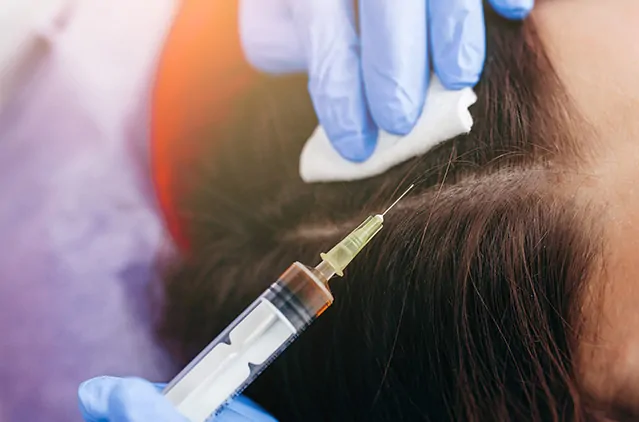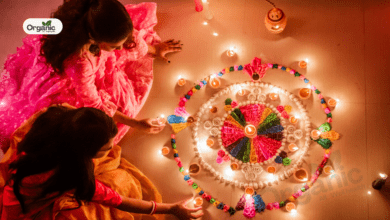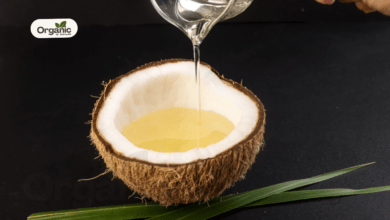PRP HAIR TREATMENT: SAFE, EFFECTIVE HAIR RESTORATION WITH THE BEST HAIR SPECIALIST IN BANGALORE

If you are thinking about PRP hair treatment to reduce hair fall and grow thicker hair, this guide will help. PRP hair treatment uses platelets from your own blood to wake up dormant hair follicles and make existing hair stronger. When done by the best hair specialist in Bangalore, it’s a reliable, low-downtime option with natural-looking results.
Why PRP works
PRP is a part of your blood with many platelets and growth factors. When placed into the scalp, these signals calm inflammation, raise blood flow, and nudge follicles to start growing again. Many people see less thinning and better hair texture after a few sessions.
Research and safety
Platelet-rich plasma has become a safe option for hair loss, especially pattern hair loss (androgenetic alopecia). Several reviews show PRP uses platelets’ repair power to raise hair density and growth (Cyran et al., 2024; Justicz et al., 2020). One review of trials found 84% of studies saw positive effects, and 50% showed clear, measured gains (Gentile & Garcovich, 2020). Most reports show few side effects. Experts say PRP can be used by itself or with other treatments like minoxidil or finasteride.
Who should try PRP
PRP is best for men and women with early- to mid-stage hair loss or general thinning. It helps when hair follicles are still present. It will not help areas that have been bare for years. People with blood problems, active scalp infections, or some health issues should avoid PRP. A doctor will check a small blood test and look at your scalp before advising treatment.
What happens in a session?
Consultation
The doctor asks about your health, medicines, and family hair loss. They look at your scalp and take photos. Expect a clear, honest view of likely results.
Blood draw
A small sample, about 10–20 mL, is taken from your arm.
Spin the blood
The sample is put in a machine that spins it to separate the platelets and plasma from red cells.
Scalp preparation
The area is cleaned. The doctor may use a numbing cream to cut the pain.
Small injections
The platelet mix is placed into the thin areas with tiny shots. A session takes 30–45 minutes.
Aftercare
Mild soreness and small bruises are common. Do not wash hair for 24 hours. Skip heavy exercise for 48 hours.
Plan and results
Most doctors suggest 3–6 sessions, each 4–6 weeks apart. After that, a maintenance session every 4–6 months helps keep the gains. People notice less shedding in 2–3 months. Clear hair thickening shows by 6 months. Adding a doctor’s medicine, like topical minoxidil when suitable, often gives better, longer results. Some doctors add gentle needling or light therapy to help more.
Pick the best hair specialist in Bangalore
Credentials matter
Choose a dermatologist or hair doctor trained in hair care and injection work. Look for proof of their work and membership in medical groups.
Ask about experience
Ask how many PRP sessions they have done. Request real before-and-after photos from patients like you. A good doctor will explain the likely results for your case.
Check their method
Good clinics use a tested spin machine and keep things sterile. Ask if they check the platelet level. Ask if they use any agents to activate the platelets. A clear clinic will tell you exactly what they do.
Read reviews and follow-up care
See patient reviews online. Check if the clinic sets follow-up visits. The best doctors will write a plan and change it as you respond.
Simple pre- and post-care
Before treatment
- Tell your doctor about any blood thinners or supplements. You may need to stop some for 5–7 days. Ask the prescribing doctor first.
- Avoid smoking for 48 hours before and after the session.
- Come with clean hair and no hair products.
After treatment
- Expect mild swelling or tenderness for 1–3 days.
- Avoid saunas, alcohol, and tough exercise for 48 hours.
- Use gentle hair care and keep the scalp out of the strong sun for a week.
Safety and side effects
PRP uses your own blood, so allergy risk is very low. Common effects are mild pain, small bruises, or slight swelling at the shot sites. Serious problems are rare when a trained doctor does the procedure. If you see growing redness, a fever, or rising pain, call your clinic right away.
Questions to ask at your visit
- What results can I expect for my hair type?
- How many sessions will I need, and what is the total cost?
- Can I see before-and-after photos of similar cases?
- What exact process and machine do you use?
- Will PRP be used with other treatments for better results?
A short patient story
A 32-year-old woman had early thinning at the crown. She did 4 PRP sessions and used a doctor-recommended topical lotion. After the second session, she saw fewer falls. At 6 months, her hair looked denser and stronger. The doctor adjusted the plan and added a maintenance session every 6 months. The steady plan kept the gains.
Cost and timeline
Cost varies by clinic and the tools they use. A single session can range from modest to higher, so ask for a full package price. Plan for the initial set of sessions and a yearly maintenance budget. Expect to wait months to see steady change. That is normal. A clear timeline and cost plan from your doctor helps you avoid surprise bills and gives a simple way to judge progress.
Final word
PRP hair treatment is a straightforward, evidence-backed option for many people with thinning hair. To get the best result, choose a qualified dermatologist or the best hair specialist in Bangalore who follows standard protocols, sets honest expectations, and provides structured follow-up. If you’re unsure, book a consultation and ask specific questions about their PRP technique, session plan, and real patient results.
Start with a trusted clinic and track your progress.



